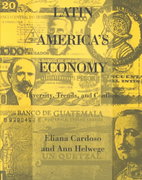Question
A. A monopolist with constant average and marginal cost equal to 8 (AC=MC=8) faces demand Qd=100 - P, implying that its marginal revenue MR=100-2Q. Its
A. A monopolist with constant average and marginal cost equal to 8 (AC=MC=8) faces demand Qd=100 - P, implying that its marginal revenue MR=100-2Q. Its profit maximizing quantity is ?
B. A monopolist has total cost TC = Q2 + 10Q + 100 and marginal cost MC = 2Q + 10. It faces demand Q = 130- P (so its marginal revenue is MR = 130 - 2Q). Its profit-maximizing output is
C. A lake supports a delicious variety of fish.The land around the lake is owned by two fisherman, so by state law both are free to fish as much as they like.Let FA and FB be the number of fish each catches, respectively.Suppose the price of fish is 100 - FA - FB.Given this demand curve, it turns out that marginal revenue is 100 - 2FA - FB for fisherman A and 100 - FA - 2FB for fisherman B.What is the market price for fish in the Nash equilibrium?
4. A monopolist has a total cost TC=.1Q^2 -2Q+100. and marginal cost MC=.2Q-2. Market demand is Q=86-P, implying that the firms marginal revenue is MR=86-2Q. Its profit maximizing output is
5. A monopolist can sell 300 units of output for $45 per unit. Alternatively, it can sell 301 units for $44.60 per unit. The marginal revenue of the 301st unit of output is
Step by Step Solution
There are 3 Steps involved in it
Step: 1

Get Instant Access to Expert-Tailored Solutions
See step-by-step solutions with expert insights and AI powered tools for academic success
Step: 2

Step: 3

Ace Your Homework with AI
Get the answers you need in no time with our AI-driven, step-by-step assistance
Get Started


